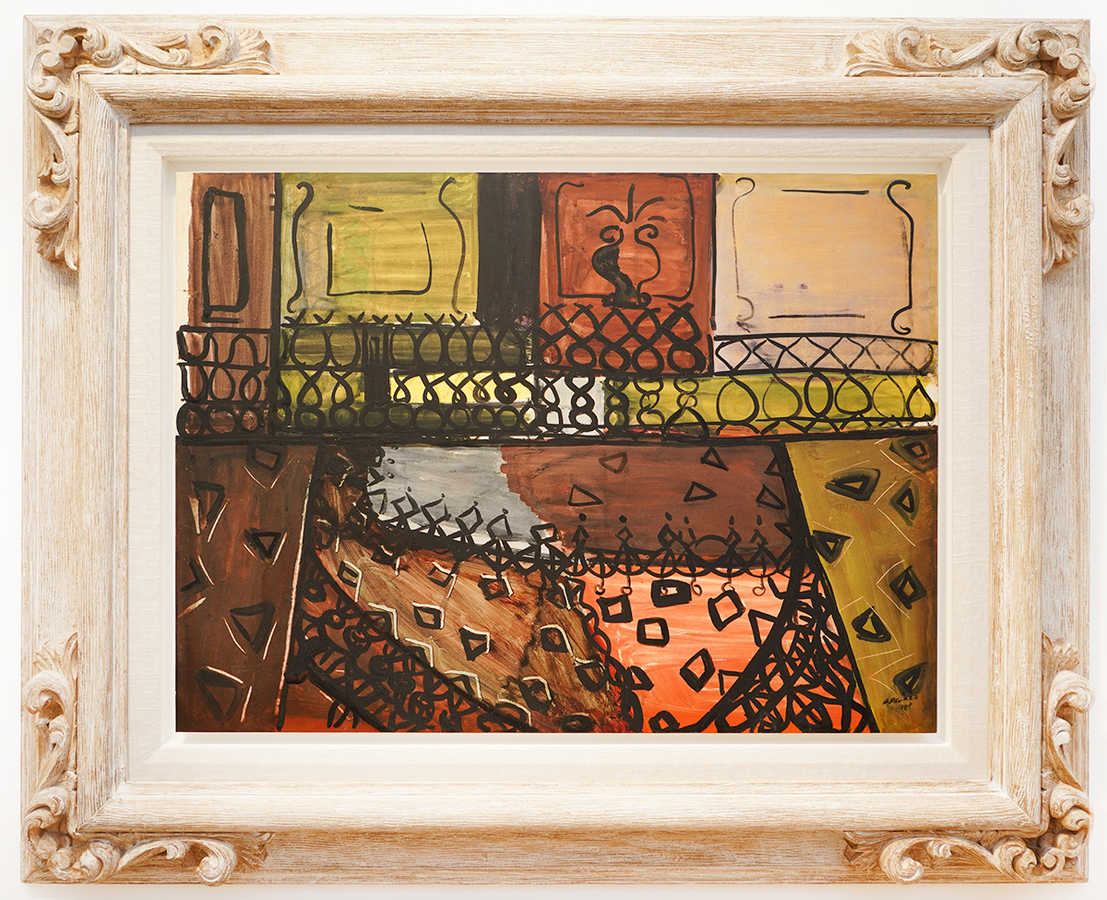| |
 |
Amelia Peláez
Interior with Balcony
(Interior con Balcón), 1947
mixed media on heavy paper laid down on board
22 x 30 inches
Exhibited in Amelia Peláez: The Craft of Modernity, at the Pérez Art Museum, Miami, FL, Dec. 4, 2013 to Feb. 23, 2014,
and illustrated in the corresponding catalog, page 91.
Exhibited in Cuban Art in the 20th Century: Cultural Identity and the International Avant Garde, at the Florida State University
Museum of Fine Arts Tallahassee, FL, Feb. 12 – Mar. 27, 2016; illustrated on the cover and on page 81 of the accompanying catalog. An exhibition which later travelled to the Coral Gables Museum, January 22 – April 23, 2017.
Illustrated in Important Cuban Artworks Volume Seventeen,
Cernuda Arte, Coral Gables, Florida, 2019, page 20.
In the most insightful analysis of [Amelia] Peláez’s stylistic sources in Cuban architectural decoration, artist Robert
Altmann introduced the issue: “The paintings of Amelia Peláez are a conscious vision of the dominant role of ornament in relation to the theme of still life and of the elements of Cuban ornamental art of the last century.”(1) “In her own studio,” he observed, “Amelia Peláez accumulates vestiges of the colonial past: corinthian columns,
mamparas, sculpted chairs, and other objects that remind her at every glance of a precise stylistic language [that of Cuban nineteenth-century ornamental art].”(2) About the specific connections between her style and the precise visual language of colonial architectural decoration, Altmann was one of the first to point out that her use of color and chiaroscuro suggests the filtration of light created by the medio punto, and that her linear arabesques construct a limited, static space defined by perforated screens parallel to the picture plane, not unlike the space found in traditional Cuban ornamental iron and wood works. He concluded that Peláez’s paintings were a carryover and a rehabilitation of forgotten ornamental tradition found in Cuban nineteenth and early-twentieth-century architecture and crafts.
(1)(2)Robert Altmann, “Ornamento y Naturaleza Muerta en la Pintura de Amelia Peláez”, Orígenes, La Habana, No. 8, Invierno, 1945.
Juan A. Martínez, Cuban Art and National Identity, The Vanguardia Painters,
University Press of Florida, 1994, page 133.
|
|
|
| |
| |
| |
| Copyright 2002-2024, Cernuda Arte. All Rights Reserved |
| |
|
|
